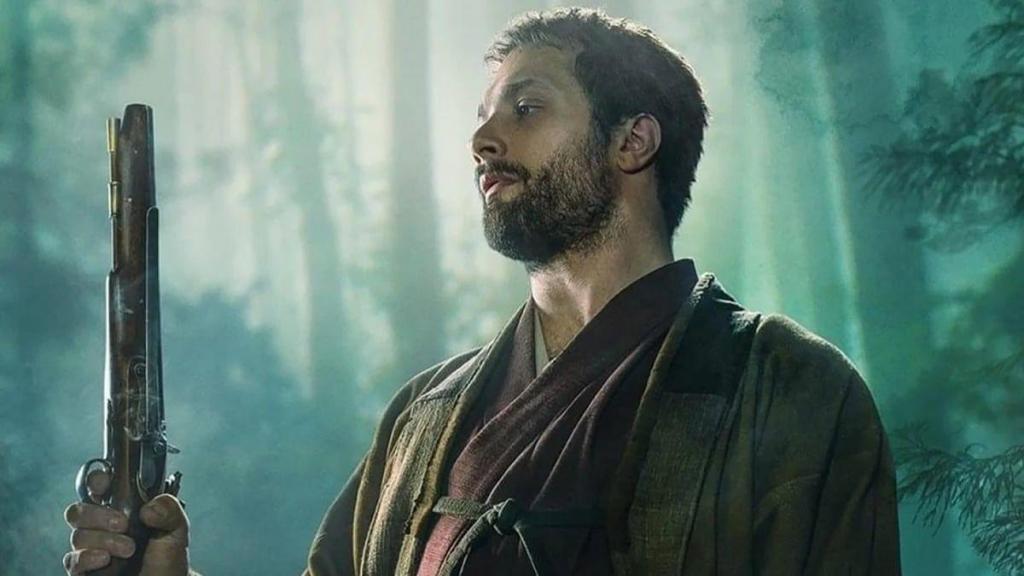Shōgun is now airing on FX and Hulu, letting a modern mainstream audience experience the political intrigue of James Clavell’s 1975 novel of the same name. However, it should be clear from the first two episodes of Shōgun (now streaming on Hulu and subtitled and English Dub versions) that its world of feudal Japan was not some conjuring of the writer’s creative mind.
Videos by ComicBook.com
It took James Clavell three years of just doing historical research for him to write Shōgun, and it was during that period of research that Clavell found plenty of compelling drama in the actual history of Japan that he didn’t have to even spin the details that much to create his story – he simply had to fill-in new characters and details that echoed the historical accounts.
NOTE: Obviously, discussing the course of history will result in some SPOILERS about Shōgun the TV series. However, it should be just as obvious that Clavell’s novel and the show are not direct historical accounts, so specific story SPOILERS about the fictionalized characters will not be revealed. The only goal here is to reflect the historical context that inspired Shōgun the book, which is now this acclaimed 2024 limited series.
Shōgun: The Real History That Inspired the FX/Hulu TV Series

First of all, in the larger context of history, Shōgun is a fictionalized account of Lord Tokugawa Ieyasu’s struggle for power in a pivotal era of Japan’s history.
Like the character of Lord Yoshii Toranaga, Ieyasu (born as “Matsudaira Takechiyo”) came from the family of a Japanese daimyo, which required him to spend a lot of his childhood as a hostage of another lord, where he learned the cleverness of deception and strategy – all within the strict customs of Japanese feudal society. Without getting into the weeds, Ieyasu took over as daimyo for his late father and eventually came to serve under lord Oda Nobunaga, alongside his fellow subordinate Toyotomi Hideyoshi. When Nobunaga was killed, Ieyasu and Hideyoshi briefly became rivals for power until Ieyasu eventually declared allegiance to Hideyoshi (who Shōgun viewers will know as “Taiko” Hidetoshi Nakamura), serving under him until his death. Ieyasu built a castle in Edo (like in the show) where he ruled as daimyo, consolidating wealth and power for years until the conflict between the five regents finally bubbled over.
We’ll stop there, for fear of SPOILERS. All there is to say is that Toyotomi Hideyoshi’s death started a power struggle among the five regents (including Ieyasu) since his son, Hieyori (or Sen Mars’ “Yaechiyo Nakamura” in the show) was too young to take the throne. If you want to know where that history leads, read about The Battle Sekigahara HERE – but be warned it WILL SPOIL the biggest events and outcomes of Shōgun.
The Real Blackthorne

The other piece of history that Shōgun is drawing from are the voyages of English sailor and navigator William Adams – the inspiration for the Shōgun character of John Blackthorne (Cosmo Jarvis). Like in the show, Adams was the first Englishman to reach Japan’s shores through The Strait of Magellan in the year 1600, same as the show.
As in the series, Adams and his surviving crew were taken prisoner in Osaka, where he was brought before Tokugawa Ieyasu, when the latter was still lord and protector of a young Toyotomi Hieyori. Adams helped Ieyasu learn about the Western world, its customs, beliefs, and warfare on land and sea, forging a bond of friendship that would redefine Japan going forward.
If you want the full SPOILERS of William Adams’ history read HERE. But again, it will reveal some big twists in how Shōgun’s story ends.
The Real Mariko

Finally, Mariko Toda (Anna Sawai) is a character based on the Japanese historical figure Hosokawa Garcia (aka Akechi Tama). Garcia was the last living member of the once-powerful aristocratic Akechi Family. Like in the show, Garcia’s father, Akechi Mitsuhide, betrayed and assassinated his lord, Oda Nobunaga, casting the shadow of shame over the whole Akechi clan.
Instead of being able to follow her family into ritual suicide, “Tama” was sent away by her husband into seclusion, until Toyotomi Hideyoshi ordered her brought back to Osaka, to serve as a hostage. Tama had a maid, Kiyohara Kayo, who had converted to Catholicism and helped her to do the same (in defiance of Hideyoshi’s anit-Christian views), and she took the Christian name “Garcia.” Like Mariko, Garcia became a pivotal chess piece in the war between Tokugawa Ieyasu and his rival Ishida Mitsunari (Lord Ishido in Shōgun), following the death of Toyotomi Hideyoshi.
For the full Spoilers on Hosokawa Garcia read HERE.
Shōgun streams new episodes on Tuesdays on FX/Hulu.








